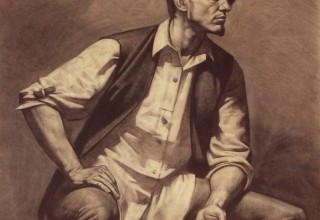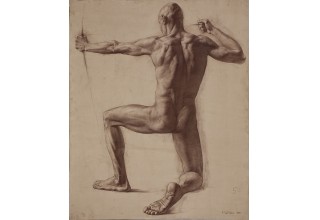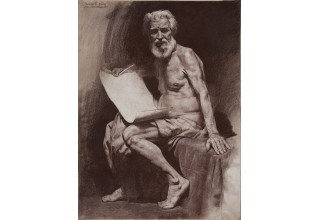Academic Drawing - Foundation in Visual Arts

FLORENCE, Italy, May 8, 2018 (Newswire.com) - The artists behind visually stunning sculptures, paintings, crafts, ceramics, animation and other creative visual art pieces have made the world a significantly more beautiful place to live in and savour. These beautiful minds share one thing common between each other - they have a very strong foundation in academic drawing. Florence Classical Arts Academy offers the skills necessary to be a professional visual artist.
Visual arts and academic drawing are innately connected. Think of academic drawing as a metamorphosis of sorts that moulds a novice into a visionary visual artist. There are many lessons to be learned from academic drawing, and here are some of them.
Measuring
Think of a sketch artist. The first thing that pops in mind is probably the image of a person holding a pencil at their arm's length, one eye shut, and another squinting on the pencil.
And what are they doing exactly? They are measuring.
They are measuring their subject and the angles, and expertly approximating the proportions they want to work with. While drawing, an artist can choose to make a life-size portrait or something even bigger or even smaller than the actual subject.
Measurements and proportions are a big part of the visual arts. One uneven measurement, one-off proportion, and one wrong angle can make the whole visual art piece a mess. A strong background in academic drawing will make sure that a visual artist always gets what they had conceived in their mind - magic.
Perspective
Perspective is what separates the great artists from the great ones. Imagining the spatial relationships between various parts of drawing and creating a cohesive piece is a big part of making the visual art sing. Florence Academy of Russian Art is one of the leading centres for mastering academic drawing. They teach their pupils the art of perspective and every other skill they need to excel at academic drawing.
It is all about point of view. When artists learn to draw, they also learn the art of perspective. This gives them a sense of space and the sensibilities to put themselves in the shoe of the viewer. This way, they are able to convey exactly what they want the viewers to perceive.
Constructive Analysis
Academic drawing also teaches its pupils the art of constructing a picture. Artists create different shapes and forms to make them fit their vision. This process requires the artist to do a constructive analysis of what shapes need to be drawn where.
Artists can extrapolate this skill set to the visual arts like sculpture, architecture, and more. They can apply these principles in 3D as well. All they have to do is use the principles of constructive analysis to make a visual art more appealing to their viewers.
What can it do?
Think of academic drawing as alphabets. While it may seem simple, mastering the alphabets is the doorway to a whole new world of artistic excellence. And any artist who wants to explore the world of visual arts should make it a point to learn the ABC of visual arts aka academic drawing.
As a professional artist, academic drawing can prove to be the entry point into a sensational career. Once the basics are learned, one can easily pick up the skills necessary for becoming an accomplished architect, designer, illustrator, sculptor, painter, and so much more.
Florence Classical Arts Academy is here to turn dreams into reality.
Source: Florence Classical Arts Academy




